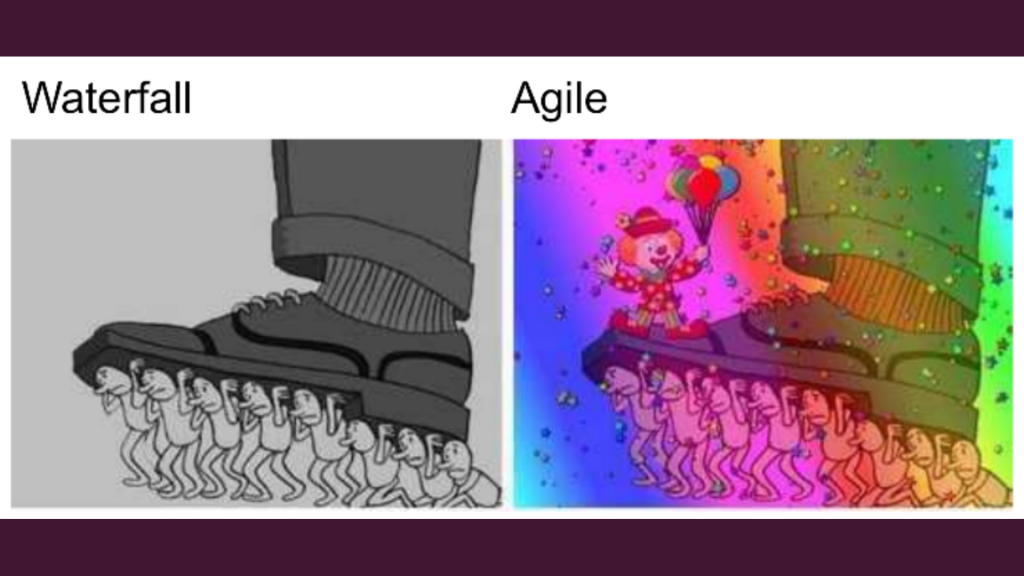The first article in the Business Agility series was titled “Agile is dead”, obviously Agile is not dead, it is still very much alive and well.
However, it is common to hear of companies that have decided to “give up”. Companies that have invested large amounts of resources (money and time) in adopting Agile as a way of working. They have invested a lot in training, but hardly anything has changed.
We must understand that transforming goes beyond training.
In some cases, the training has had some impact. The way of working has changed, now they work using Scrum or Kanban but the boss is still the boss, not the leader. New roles are put on the equipment, panels on the walls and even large amounts of money have been paid for a new tool to work “differently”.
Despite all these efforts, teams still do not have the autonomy to decide how to do things, they are either completely disconnected or very distant from the customer or end user. Agile has been adding new elements around the job, but the reality of the business remains the same.

The main reason for Agile’s failure
There is a phenomenon that explains this very thing that we often see in many organizations where they have “adopted” Agile without understanding what the purpose of Agile is. In the following video I tell you about the Cargo Cult phenomenon:
FOMO AGILE
(FOMO stands for Fear of Missing Out).
When you hear large companies that are leaders in their market advertising that they are Agile, that they have adopted Agile, or that they are Agile, it creates pressure on others for fear of missing this opportunity and being left out of the future market. And they hire an external company to train and advise them to also be Agile without really identifying what they want to change about the business in this “Agile transformation”.

Before embarking on a transformation, the first thing we have to ask ourselves is: What objectives do I want to achieve? Because maybe Agile is not for you.
Before embarking on a transformation, the first thing we have to ask ourselves is: What objectives do I want to achieve? Because maybe Agile is not for you.
While in most companies, Agile can contribute greatly to success, it will always depend on the definition of success for that company:
If you don’t know where you are going, it doesn’t matter which path you take
What is Agile really?
I define Agile as a business philosophy. A set of methodologies focused on obtaining better results in the organization.
Agile is a business philosophy based on a manifesto created in 2001 that is the foundation of this new way of working. The statement outlines the important points to follow in order to adopt this new business paradigm.

When we hear Agile, we must understand that we are talking about the following:
- Cultural change: this point includes new organizational models, or new roles, although we mainly identify it with the “New Ways of Working” (new ways of working).
- Empowered teams: support is given to the teams to entrust them with an objective and it is left to them to decide how to achieve it.
- Communication: effective communication and transparency are indispensable in the adoption of Agile.
- Collaboration: one of the values of Agile is people and their interactions.
- Short feedback cycles to maximize learning: in today’s business environment, the speed at which a company learns from its mistakes or its environment makes a difference to its future.
- Adaptation: responding to changes in business needs or in the environment is one of the pillars of Agile.
New ways of working: Smart working
Agile is a business philosophy based on a manifesto created in 2001, which lays the foundations for this new way of working. The statement outlines the important points to follow in order to adopt this new business paradigm.
Not understanding what Agile is, increases our chances of failure in the adoption of this philosophy or that the results obtained will be much lower than what we could really achieve.
In case you want to find out more:
Previous blog articles related to Agile:



